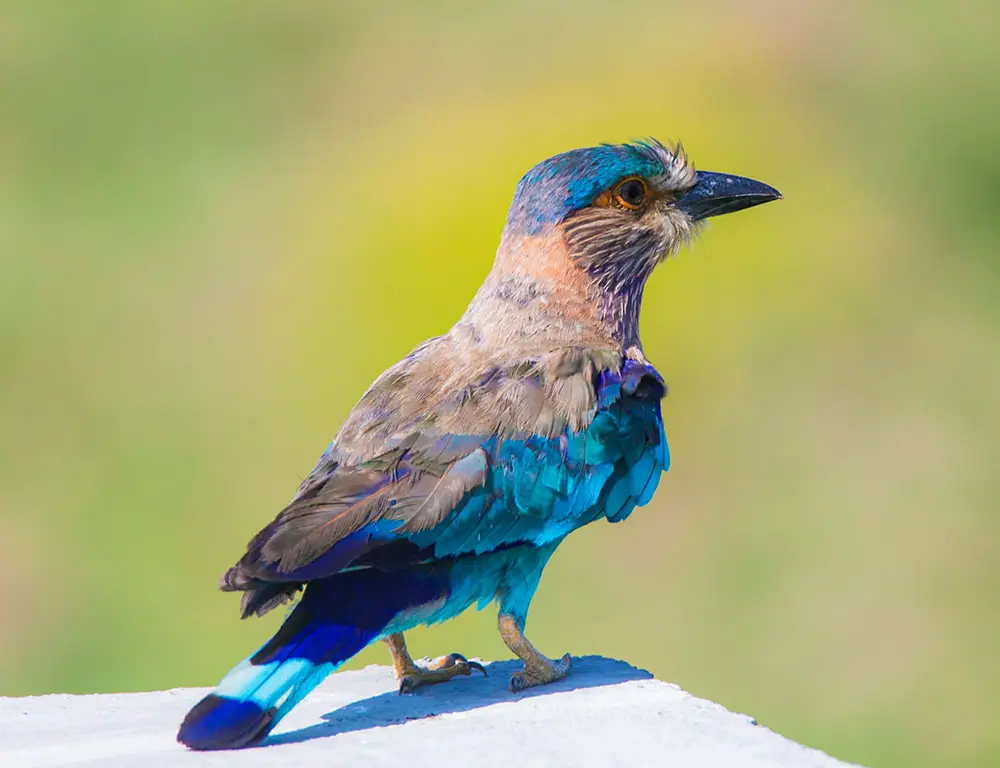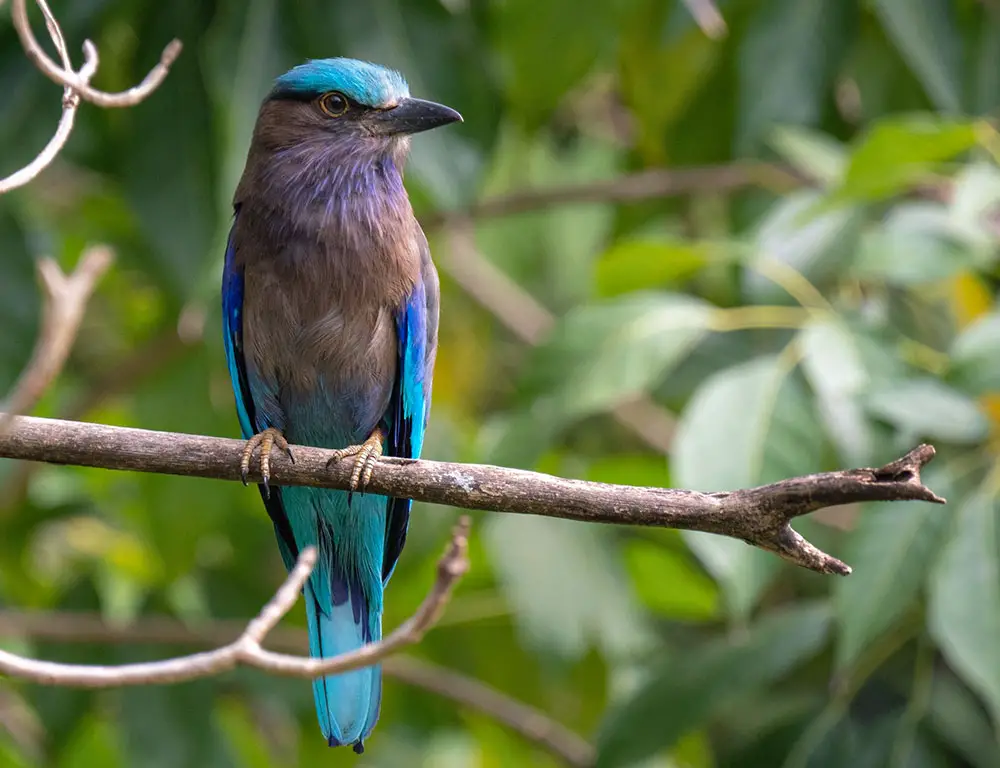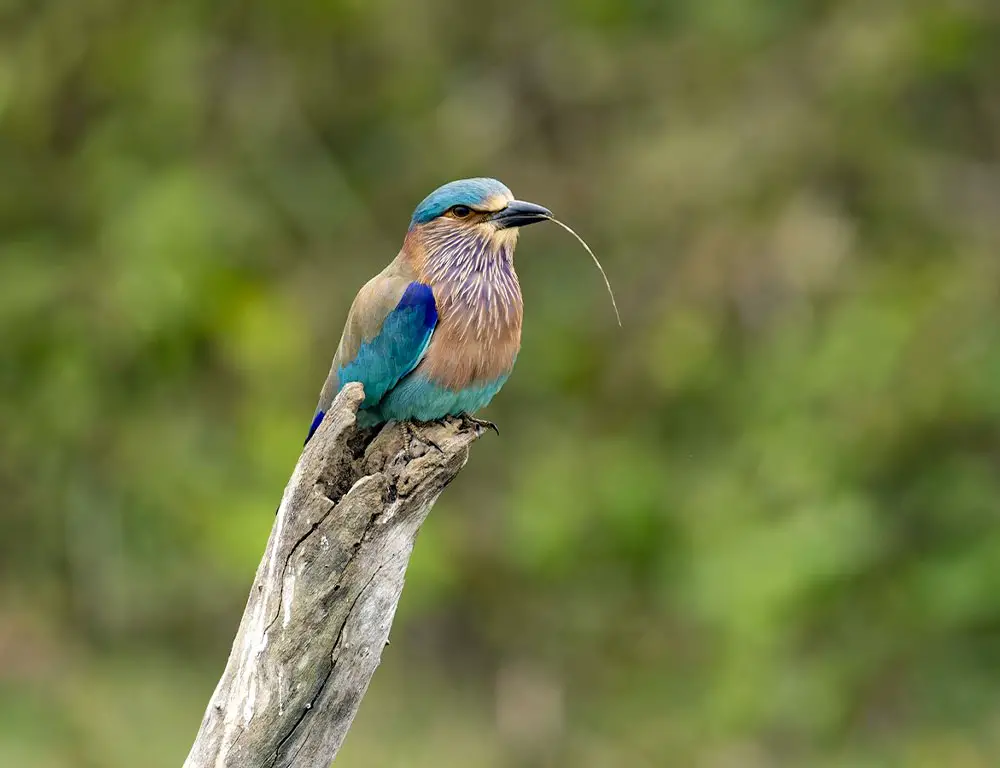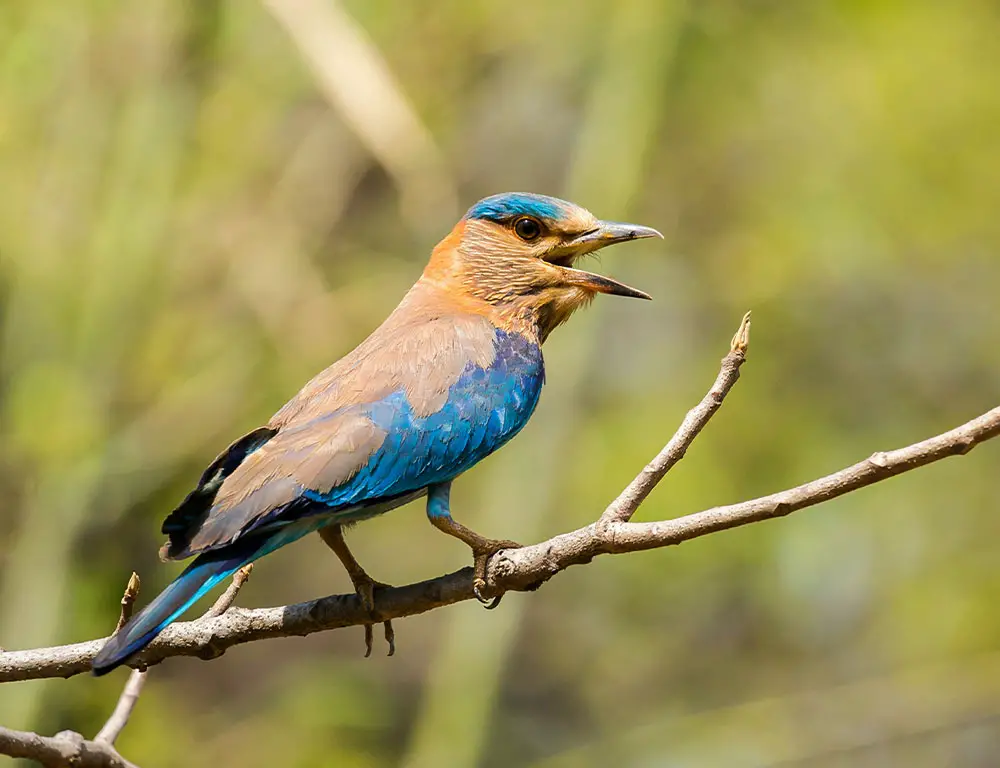With vibrant colors and a captivating flight pattern, the Indian Roller is indeed a sight to behold. This bird, an integral part of the Indian subcontinent’s rich biodiversity, has earned its name due to its unique flight behavior – it doesn’t just fly; it rolls.
As I take you on this journey to learn more about this striking creature, we’ll unravel its characteristics, habitat, and why it holds such a special place in various cultures across India.
The Indian Roller isn’t your everyday bird. Its plumage is a stunning mix of blue and brown hues that are truly eye-catching. But what sets it apart from other species is its acrobatic aerial displays – often performed during courtship or in defense against intruders.
These distinctive barrel roll flights have charmed humans for centuries and inspired the ‘Roller’ moniker.
Living predominantly in open grassland areas or lightly wooded territories across South Asia and parts of Southeast Asia, the Indian Roller thrives best with open patches of ground to hunt.
While their beauty is undeniable, their role in maintaining ecological balance by controlling pests shouldn’t be overlooked. Their diet mainly consists of insects like beetles and crickets — making them natural pest controllers!
Physical Characteristics of Indian Roller

The Indian Roller (Coracias benghalensis) is a striking bird with its vibrant plumage and graceful flight.
Here’s a summary of its physical characteristics:
Size and Weight
- Length: Indian Rollers typically measure around 28-32 cm (11-13 inches).
- Weight: As mentioned, they usually weigh between 90 to 100 grams.
Wingspan
The wingspan of an Indian Roller ranges from 65 to 74 cm (26 to 29 inches), allowing for graceful flight and agile movement.
Plumage
- Upper parts: The upper parts of Indian Rollers are adorned with shades of blue and turquoise, creating a striking contrast against the sky.
- Throat & Upper Breast: These areas exhibit a purplish-blue hue, adding to the bird’s overall vibrancy.
- Abdomen: The abdomen is characterized by a pale brown coloration, subtly complementing the vivid blues and purples.
Bill
Indian Rollers possess robust, sharp bills that are well-suited for capturing prey such as insects and small reptiles. This feature is essential for their survival and hunting prowess.
Flight
When in flight, Indian Rollers display a dazzling array of bright blue and rich purple hues, creating a stunning visual spectacle. Their wingspan and aerodynamic build allow for agile maneuvers and efficient hunting.
Behavior
Indian Rollers are known for their agile flight and acrobatic displays, often seen swooping and diving to catch prey or defend their territory.
Habitat and Distribution of the Indian Roller Bird

The Indian Roller (Coracias benghalensis) exhibits attractive habitat preferences and wide distribution across South Asia. Here’s a summary:
Habitat Preferences
Indian Rollers prefer open grasslands and lightly wooded areas for their habitat. They are often found perched on elevated vantage points, such as trees or telephone wires, from where they can survey their surroundings for prey.
Distribution Range
- Native Range: Primarily concentrated in South Asia, India is a significant part of their native range, hence the name “Indian” Roller.
- Beyond India: Indian Rollers are not restricted to India alone; they are also found across West Asia, extending to Eastern Arabia and Southern Asia up to Indochina.
Distribution Patterns
- Resident Birds: Indian Rollers are largely resident birds, meaning they do not undertake extensive seasonal migrations.
- Population Density: The population density of Indian Rollers tends to increase towards Southern India. In Pakistan, they are more commonly observed in southern regions compared to northern areas.
Urban Adaptation
Indian Rollers have shown remarkable adaptation to urbanization. They thrive in urban environments as long as there are suitable open spaces for hunting and tall structures for nesting.
This adaptability allows them to coexist with human habitation and flourish in urban landscapes.
Monsoon Adaptation
Despite being primarily land-dwelling birds that typically avoid water bodies, Indian Rollers manage well during monsoon seasons. They continue to thrive and maintain their activities, displaying resilience in adverse weather conditions.
Feeding Habits of the Indian Roller Bird

The feeding habits of the Indian Roller (Coracias benghalensis) reflect its adaptability and resourcefulness. Here’s a summary:
Primary Diet
Indian Rollers are primarily insectivores, relying on insects as their primary source of nutrition. They frequently hunt for beetles, crickets, caterpillars, and grasshoppers.
Favorite Prey
Grasshoppers appear to be a particular favorite among Indian Rollers, as studies indicate a high frequency of consumption.
While grasshoppers are preferred, Indian Rollers consume beetles and crickets, albeit with slightly less frequency.
Diversification of Diet
During periods of insect scarcity, such as dry spells, Indian Rollers demonstrate adaptability by diversifying their diet. They have been observed consuming small reptiles like lizards and frogs as alternative food sources.
Feeding Strategy
Indian Rollers exhibit intelligence and resourcefulness in their feeding strategies. They employ an effective technique when dealing with resilient prey, such as insects with defensive mechanisms.
Using rocks as tools, they beat the prey against hard surfaces until its defenses are broken down, facilitating consumption.
Foraging Behavior
Indian Rollers often perch on elevated vantage points, such as tree branches or power lines, from where they scan the ground below for potential prey. Once a target is identified, they execute rapid aerial dives to capture their unsuspecting meal precisely.
Conservation Status of Indian Roller

The conservation status of the Indian Roller (Coracias benghalensis) is currently assessed as “Least Concern” by the International Union for Conservation of Nature (IUCN). This designation implies that the species is not facing immediate threats of extinction.
However, despite this relatively favorable status, there are ongoing concerns regarding the bird’s long-term survival due to various anthropogenic factors.
Threats to Indian Roller Conservation
- Habitat Loss: Rapid urbanization and habitat destruction from human activities, such as deforestation and land development, are significant threats to Indian Rollers. Loss of nesting sites and foraging grounds diminishes their ability to thrive.
- Pesticide Use: Agricultural practices involving pesticides directly threaten Indian Rollers. Pesticides contaminate their food sources, leading to poisoning and reduced prey availability. This impacts their reproductive success and overall population health.
Population Trends
While the Indian Roller population was stable in 2004 and 2012, there has been a noticeable decline by 2020. This decline indicates a concerning trend that necessitates attention and conservation efforts to reverse.
Conservation Initiatives
Several local groups and organizations in India have initiated conservation efforts to safeguard Indian Rollers and their habitats. These initiatives include:
- Protection of Nesting Sites: Encouraging communities to refrain from cutting down trees where Indian Roller’s nest is crucial for their conservation. Preserving nesting habitats ensures the continuation of breeding cycles and population sustainability.
- Promotion of Organic Farming: Advocating for organic farming practices that eliminate or minimize pesticide use helps mitigate the threat of agricultural chemicals to Indian Rollers and other wildlife. Supporting sustainable agriculture benefits both biodiversity and human health.
- Awareness Campaigns: Raising awareness about the importance of biodiversity conservation, mainly focusing on the ecological role of Indian Rollers, fosters public support and engagement. Educating communities about the significance of preserving natural ecosystems contributes to habitat protection and species conservation.
Individual Contributions
Everyone can contribute to Indian Roller conservation by respecting their habitats and adopting environmentally friendly practices. Simple actions like refraining from disturbing nests, supporting organic products, and spreading awareness about the species’ conservation can collectively make a difference.
Conclusion
I’ve spent much time discussing the Indian Roller in this article. It’s an incredibly fascinating bird with vibrant colors and intriguing behaviors.
What strikes me most about the Indian Roller is its adaptability. This bird is resilient, thriving in urban areas or adjusting to changing habitats.
I also can’t help but admire its striking shades of blue and brown. Every sighting feels like a spectacle – a burst of color against the sky.
Let’s not forget about its unique courtship display, too:
- The male performs astonishing aerobatics
- He swoops high into the sky
- Then he descends rapidly with folded wings
- Finally, he opens his wings just before landing
It’s no wonder that many cultures consider seeing an Indian Roller as a good omen!
While there isn’t enough scientific data, anecdotal evidence suggests their population may decline. Causes could range from habitat destruction to pesticide use.
To protect these beautiful creatures, I believe it’s essential we continue studying them and raising awareness about the needs and threats they face.